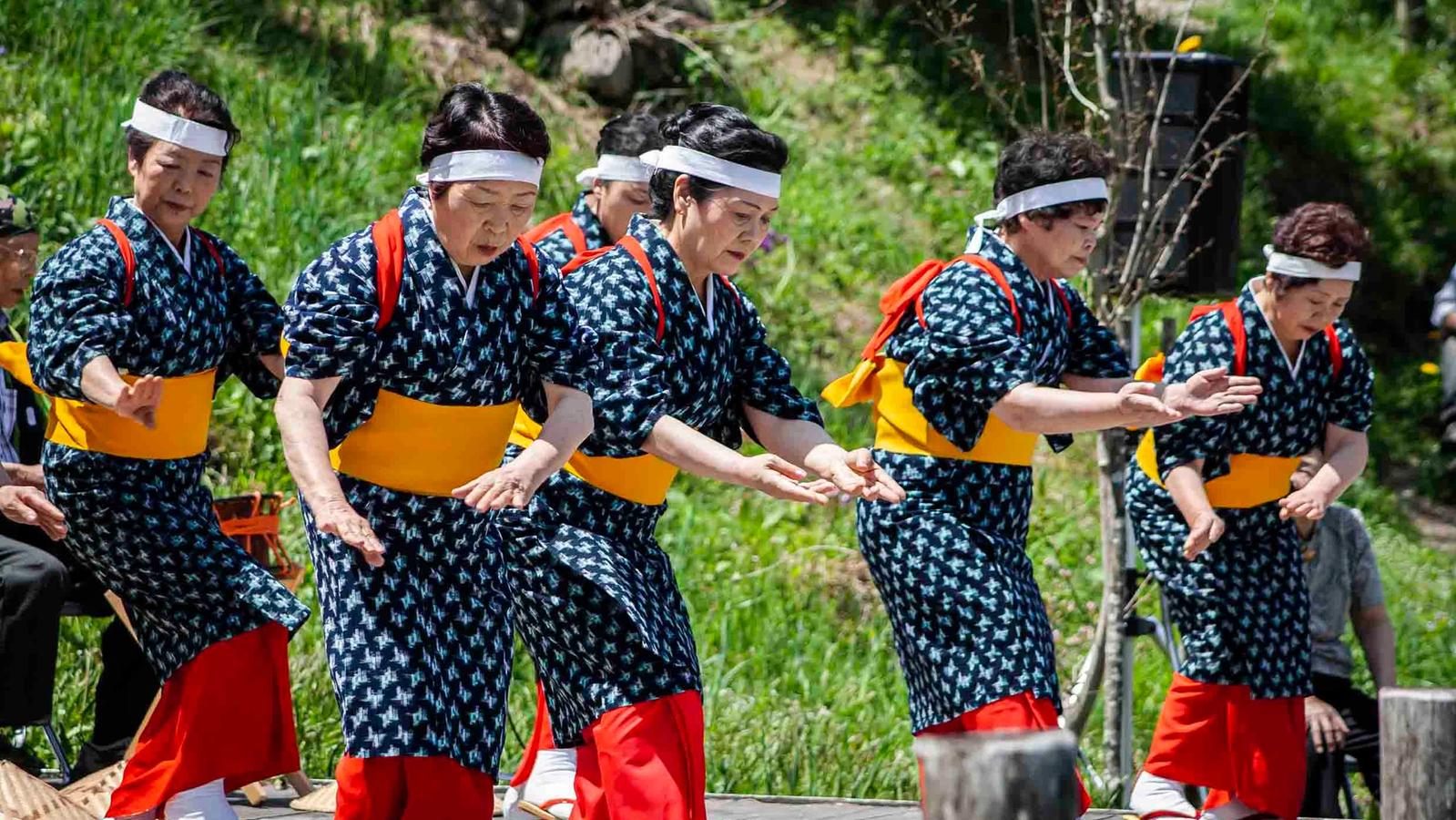

Table of contents:
1. Japan: A Rapidly Aging Society
Due to the rapid progression of Japan's aging population, the country stands to be the world's first "hyper-aged" population, or super aged society. In 2022, the death toll reached 1,582,033, a stark contrast to the less than 800,000 newborns, highlighting a critical japan birth rate issue. As of 2023, it ranks as the second oldest country globally, with a substantial portion of its populace over 65. This demographic shift towards a japan aging population is not merely a statistic but a challenge affecting Japan's economy, societal fabric, and even its stance on international relations.

The imbalance, underscored by depopulation and a decreasing japan population 2023, hints at deeper issues within its societal structure, potentially stifling social innovation. Once known for lifetime employment, Japanese companies are now grappling with an aging workforce, which, while presenting challenges, also offers a unique opportunity to re-imagine and revitalize Japan's societal norms and cultural identity.
2. Japanese life expectancy
Although we expect many old people in an aging society, Japan has some of the oldest people in the world. In 2022, there were more than 90,000 people over 100 years old living in Japan. At the same time, the average Japanese life expectancy has gone up to 85 years, making it one of the oldest in the world.
Several factors can help to explain this longevity. First, the country's high standards of living and national health care have helped people live longer. For example, work-based health insurance, know as annual health checks, are mandatory for all company employees. Second, on average Japanese people eat a lot of fish and vegetables, but not much red meat or sugar compared to their Western counterparts. Third, people in Japan are encouraged to stay busy as they age. Doing things like volunteer work or farming can help you keep a sense of purpose.

3. Japanese Population Decline
In 2010, there were 128,117,042 people living in Japan. But by 2023, the population dropped by almost 5 million people. The World Bank figures show that people aged 65 and up make up 28% of the population. By 2030, experts think that one out of every three people will be 65 or older. This means that about 33% of the people in the world will be in this age group. By 2050, experts expect this number to increase to 38%, while the population will decrease to 106 million. By then, the number of people under 14 will be less than 10%.
4. Japan Fertility Rates
As of 2020, Japan's fertility rate has plummeted to approximately 1.34 births per woman, among the lowest globally, signaling a deepening japan population crisis. This decline in the Japanese birth rate, coupled with a japan birth rate decline, underscores the urgency of addressing the japan low birth rate to mitigate the long-term impacts on the nation's demographic structure and economic stability.
5. Japan's Economic Insecurity
As more people retire each year, there has been a lack of fresh blood to replace them. This 'greying workforce' is creating a strong feelings of economic insecurity within Japan. Low employment figures for young Japanese women suggest that they could fill the gap left by retiring male worker. However, entrenched cultural attitudes suggest that Japan is unwilling to view women as a strong viable employment option.
6. Influences on Population Decline: Japan's Gender Inequality
The impact of Japan's aging society is significantly influenced by entrenched social norms, particularly affecting women's roles in both society and the economy. Despite potential opportunities for women to assume more significant roles, Japan's strong patriarchal culture persists, as evidenced by its low ranking in gender equality in 2023.
In 2023, Japan was ranked by the World Economic Forum 125 out of 146 countries in gender inequality. Japan's gender gap is plain to see in regard to politics and the workplace. For example, in 2023, the city of Onomichi apologized for giving out flyers that told new mothers how to treat their husbands after giving birth. The flyer advised women not to point out things that men "didn't like" about their wives. This included when mothers were "too busy taking care of the baby to do chores" or "got angry for no reason." It also stated that new mothers should always smile, thank their husbands for small chores around the house, and make their husbands' lunches every day.
7. Japanese Women in the Workplace
The number of women working part-time in Japan has gone up significantly since 1999, when full-time contract employment was legislated by the Japanese government. In 2020, 53% of all part-time workers employed were women. A report from the Organization for Economic Cooperation and Development says that non-regular workers make about 40% less per hour than regular workers and receive less training at their jobs.

The experience of workplace discrimination against women has been a hot topic in the Japanese media. In 2018, one of Japan's most prestigious medical schools, Tokyo Medical University, admitted that it had changed all entrance tests, and other exams, for more than a decade to keep women from applying. The school said it didn't want as many women to become doctors because it thought that women who had kids would quit their jobs early.
7.1. Maternity Harassment is Not Helping the Issue
Despite the desperate need for more babies created by Japan's aging society, the issue of "maternity harassment" has become a problem in many workplaces around the country. This is where pregnant women face harassment or mistreatment in the workplace. This type of harassment occurs because either employers or fellow employees perceive the pregnancy as an inconvenience to company efficiency, and will directly impact those co-workers within the workplace.
In a 2018 poll, the government revealed that almost half of all pregnant short-term contract workers experienced workplace harassment. Experiences by pregnant employees include being fired from the job, demotion, being treated unfairly, and verbal abuse.
8. Decline in Japanese Marriages
Not only is society getting older, but more young people are either putting off marriage until they are older or totally rejecting the idea. A 2021 government study reveals that the number of young people not wanting to get married has steadily risen since the 1980s. Men account for 17.3%, while women make up 14.6% of this group.
Three factors were identified as causing this change in thinking. First, more young women are looking for long-term jobs and more freedom for themselves. Second, young people who aspire to be free as single people. Third, young men who worry about job stability and their ability to provide enough money for a new family. The COVID-19 pandemic caused a sharp drop in the number of weddings, according to records. Experts predict that the number of wedded couples will increase after 2023.
9. The Effects of Aging Population in Japan
9.1. The Socioeconomic Impact
The current thinking is that smaller and older populations hurt productivity and long-term economic progress. However, we still don't understand for sure how a hyper-aging population might change social and economic growth. But three factors will likely create social impact. First, it is believed that young workers will shape the direction of Japan's economy by coming up with new ideas to cope with the shifting landscape. Second, it is assumed that as more people get older, social, economic, and cultural output will decrease. Third, a greater need for public health care is likely to put stress on the hospital system. The growing number of older patients will put stress on hospitals that already lack sufficient staff.
9.2. Impact of an Aging Society on Public Spending
Countries with older populations are likely to be hit hard by sharp increases in public spending on social services and health care. As Japan's elderly population grows, there is a greater need for medical care and social services. This is already driving up the cost of health care and social security payments in Japan. It is thought that this could cause government debt to grow even larger.
In recent years, the national pension scheme has also become a major concern. In 2023, the fixed monthly payment to the national pension plan is ¥16,610. But as the number of retirees grows and not enough young workers take their place, there will not be enough tax revenue to cover the national pension scheme.
10. Japan Demographic Crisis
10.1. The labor shortage dilemma
The biggest problem caused by an aging society is a lack of workers. As more people leave, the number of people who can work decreases. This leads to two big problems. First, the economy will start to shrink, which will have a direct effect on Japan's GDP. Second, when there are fewer jobs, there are fewer people paying taxes. This means there is less money for things like health care, retirement, and social services.
Industries like manufacturing and software development, which make up a sizeable portion of Japan's economy, are already experiencing worker shortages. Unfortunately, the declining birth rate means there are not enough young individuals entering the workforce to fill this gap. While Japan is still recording economic growth of 1.4% in 2023, this is well behind neighboring countries like China (5.2%) and India (6.1%).

10.2. Limits on the military
After the end of World War II (1945), Japan's army was disbanded. However, changes to its constitution in 2022 have meant that Japan has increased military expenditure with the goal of growing its self defense capabilities. Many people argue that this is needed because tensions between China and North Korea have grown in recent years. But an aging population could have a big effect on Japan's armed power in the future. If there aren't as many young people to join the military, the country might not be able to effectively defend itself. Japan's drop in population could have an effect on Japan's foreign policy and its ability to keep a strong defense force.
11. Solutions to Japan's Shrinking Population
11.1. Increasing the retirement age
Increasing the retirement age could be one way to deal with the lack of workers caused by an older population. By letting people work longer, Japan can partly make up for the loss of workers caused by retirement. As of 2023, Japan's official retirement age is 60 years old (61 years for civil workers). However, by 2031, the government of Japan will raise the age at which civil workers must retire from 61 to 65. Also, private companies are being told to keep their older workers and let them leave later. Some private companies are already taking action by making the age at which people can retire 65.

11.2. Encouraging Female Participation
Another approach to solving Japan's shrinking population is to encourage greater female participation in the labor force. As previously mentioned in this article, women are unequally represented in the Japanese workforce. However, a policy initiated by the late Prime Minister Shinzo Abe, 'Womenomics' (2013 - 2020), aimed to incentivize companies to hire more women and promote them to leadership positions. Approaches such as this could help alleviate labor shortages and promote gender equality.
11.3. Loosening immigration restrictions
To combat labor shortages exacerbated by Japan's aging society, the country has started to relax its stringent immigration policies. A new regulation introduced in April 2019 created two new visa categories for foreign workers in sectors facing labor shortages, marking a significant shift in Japan's approach to immigration. By the end of 2022, the number of foreign residents hit a record high of 3 million, as more foreign migrant move to Japan. This indicates a potential easing of demographic pressures.
11.4. Promoting technology
Innovative technologies offer another avenue to address the challenges of Japan's aging population. Since the early 2000s, Japan has put faith in technology innovation to help make care-giving easier and boost production. By 2018, the national government had spent more than $300 million on research and development for robots that could help care for older people. At the same time, experts predict that the lack of care workers will get worse over the next ten years. Many people in Japan see robots as a way to replace these lost workers without having to pay higher wages. However, this technology is still a long way from being perfected.
12. Embracing Japan's Shrinking Population
Japan's demographic challenges, characterized by an aging population and a declining birth rate, necessitate a multifaceted approach. By raising the retirement age, encouraging female workforce participation, easing immigration restrictions, and focusing on health promotion, Japan can navigate the implications of demographic changes. As the country with the oldest population globally, Japan's strategies and experiences offer valuable insights into managing demographic transitions and could serve as a model for other nations facing similar demographic crises.
Popular Articles


Tokyo Favorites: 20 Must-Do Experiences for Travelers

Kyoto Bike Tours: Discover the City’s Hidden Gems with Noru

Kyoto 3-Day Itinerary: Best Things to Do for First-Time Visitors

Universal Studios Japan Tickets: Your Guide to Visiting USJ

Find Out What Japan Really Thinks of Foreign Tourists

Manga Explained: Top Recommendations for Beginners
FAQs
No FAQs available for this post.
Loading Comments...

James Saunders-Wyndham
I've been immersed in Japanese culture and daily life for over 30 years and am proud to call Japan my home. Originally from Australia, my journey has taken me from teaching at Japanese universities to traveling extensively across the country, uncovering its hidden gems. As a web developer, I built Romancing Japan from the ground up to share these experiences with you. Whether it's the charm of old Kyoto, the pulse of Tokyo, or the tranquility of the countryside, I love helping others discover the magic of Japan—one story at a time.
Popular Articles

Tokyo Favorites: 20 Must-Do Experiences for Travelers

Kyoto Bike Tours: Discover the City’s Hidden Gems with Noru

Kyoto 3-Day Itinerary: Best Things to Do for First-Time Visitors

Universal Studios Japan Tickets: Your Guide to Visiting USJ

Find Out What Japan Really Thinks of Foreign Tourists
